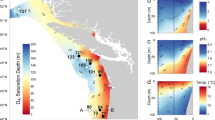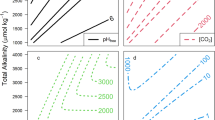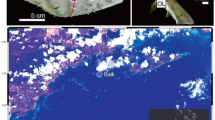Abstract
THE letter by Robertson and Pantin on "Tube Formation in Pomtoceros triqueter (L)"1 points to the sea water as the source of the calcium required for the building of tubes. It is of interest that a similar condition apparently obtains in the case of Ostrea virginica. My observations in 1932–332 on the growth of oysters in Long Island Sound show that the deposition of the shell material continues throughout the winter even when other activities of the organism are reduced to the minimum. The weight of the shell increased when the temperature of the water dropped below 4° C. and the oysters were in a state of hibernation, unable to take in any food. During the same period the weight of the tissues remained constant. In view of the fact that there is no storage of calcium in the body of the oyster, an inference can be made that calcium and other salts required for the building of shells are taken in directly from the sea water.
This is a preview of subscription content, access via your institution
Access options
Subscribe to this journal
Receive 51 print issues and online access
$199.00 per year
only $3.90 per issue
Buy this article
- Purchase on SpringerLink
- Instant access to full article PDF
Prices may be subject to local taxes which are calculated during checkout
Similar content being viewed by others
Author information
Authors and Affiliations
Rights and permissions
About this article
Cite this article
GALTSOFF, P. Sources of Calcium for Shell of Ostrea virginica. Nature 141, 922 (1938). https://doi.org/10.1038/141922b0
Issue date:
DOI: https://doi.org/10.1038/141922b0



